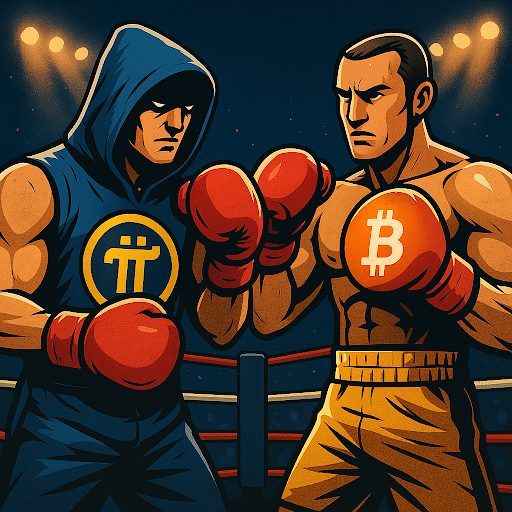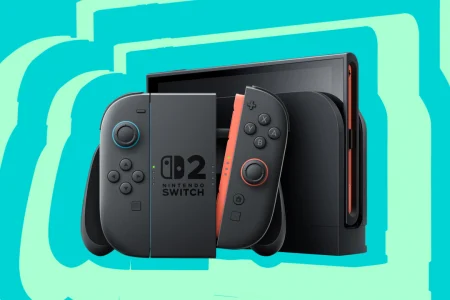Pi Network finally pulled the trigger on its mainnet launch. With the hype literally “shooting to the moon,” do we believe the Bitcoin throne at last has a worthy contender?
Since our previous post on Pi Coin vs Bitcoin and after what felt like an eternity of cryptic updates and delayed promises, Pi Network has finally pulled the trigger on its mainnet launch. The hype? Unreal. This was the moment Pi Coin was supposed to go from an app-based fantasy to a legitimate, tradable cryptocurrency. And for a hot minute, it looked like it was happening—prices shot up, early adopters cheered, and Twitter (sorry, X) was drowning in moon emojis. Pi initially spiked to $1.97, crashed to $0.737, then bounced back 80% and then went all the way back down $0.76. That’s pretty low for a coin that was expected to hit $50 at one point.
The $50 Dream

Yeah, about that $50 dream, turns out, reality had other plans. There was a ton of speculation (and, let’s be honest, wishful thinking) that Pi Coin would debut at some sky-high price, with $50 being one of the more popular numbers thrown around. Some hardcore believers even claimed it would hit $100 or more. That being said, however, when the mainnet finally launched, Pi’s opening price on exchanges was a lot more “modest” at $1.97. Why the massive gap?
A few reasons. First, a lot of those high numbers were just “ball-park” figures and not really based on anything concrete, just community hype and possible comparisons to Bitcoin’s early days. Second, real-world trading prices are dictated by supply, demand, and market sentiment, not just what people want them to be. And third, even though Pi is now tradable, not all users have access to their full holdings yet, which is affecting liquidity. So $50? Maybe one day for sure, but not yet.
The Mainnet Launch

Now that the mainnet is live, the million-dollar question is “What’s next?” Does this mean that major exchanges might finally start listing Pi Coins? As of now, Pi’s price is up and down like an old see-saw and currently at $0.76 with some exchanges even listing unofficial IOUs instead of the actual coin. Until there’s clarity on listings and widespread adoption, it’s hard to say whether Pi is the next Bitcoin or just another ambitious project that couldn’t escape its own hype.
Then there’s also the obvious question about utility. Crypto enthusiasts love to dream about building truly decentralized economies and there’s nothing wrong with that. At the end of the day, however, if no one is actually going to use their Pi Coins for anything other than speculative trading, it’s going to be difficult to guarantee it’s long-term survival. Additionally, while the team does have plans, partnerships, dApps, and all that good stuff, execution is everything and for now, Pi still has a lot to prove.
Ecosystem and Integrations

Pi has a number of integrations already. Take Pi Care, for instance, it lets users flag issues directly to developers, making troubleshooting a more streamlined process. Then there’s PiGame, where you can actually earn Pi just by playing. Explore Pi serves as a mobile-friendly block explorer, giving users a closer look at transactions and network activity.
On the more practical side, Workforce Pool allows employers and freelancers worldwide to connect, with payments handled entirely in Pi. Meanwhile, 1Pi Mall is an e-commerce platform where every transaction happens in Pi Coin, no fiat involved. And let’s not forget PiFest and the .pi Domains Auction, events designed to push Pi’s real-world adoption even further.
Areas of Improvement
Despite these integrations, however, the ecosystem that Pi Network is trying to build still feels incomplete as everything still exists within its own walled gardens. With adoption mostly limited to its own community, it is less likely to have its demand driven up through the roof like Bitcoin did. Yes, there are apps and integrations like we mentioned above, but do we know how many people are actually using them at scale?
For Pi Coin to break into mainstream commerce like Bitcoin did when it started, we need actual businesses (not just Pi Network initiatives) to start accepting it as payment. Until that happens, it’s still in the “promising but unproven” phase. So while there are integrations, the broader utility of Pi remains a work in progress, which isn’t a bad thing, but still a long way off from making Pi Coin owners “Bitcoin-Rich.”
The Bottom Line
So will Pi Coin be the next Bitcoin? The truth is, it’s too early to tell. Pi has the numbers for sure, millions of users and an active community. The problem is that alone doesn’t guarantee success. Like we have mentioned already, the real test will be whether Pi Coin becomes something people actually use, not just hold and hope.
If the team can deliver on their vision, integrate Pi into real-world applications, and stabilize its trading environment, then maybe, just maybe, this could be the start of something big. Either way the ride is far from over so if you’re holding and hoping, buckle up, it could get interesting.
In case you missed:
- Will Pi Coin Be the Next Bitcoin? A quick Reality Check!
- The Dirty world of Cryptocurrency trading: A Beginner’s Guide
- PVC Meta Coins: The Next Big Thing in Crypto?
- Scientists establish two-way Lucid Dream communication!
- DeepSeek’s AI Revolution: Creating an Entire AI Ecosystem
- AI in 2025: The Year Machines Got a Little Too Smart (But Not Smart Enough)
- Samsung’s new Android XR Headset all set to crush Apple’s Vision Pro
- Lab-Grown Brain Thinks It’s a Butterfly: Proof We’re in a Simulation?
- China launches world’s first AI-powered underwater data centre!
- X’s Trend Genius: Social Media Psychic or Just Another Algorithm?










1 Comment
Pi.is going to run over btc